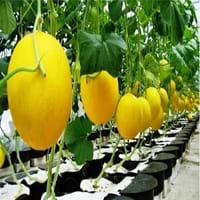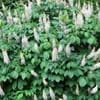Life Span
Perennial
Annual or Biennial
Origin
Southeastern United States
Africa
Types
Not available
Earlibrew, Honey King, Moonshine, Brilliance,Honey Chow
Number of Varieties
Not Available
Habitat
Bluffs, Coastal Regions, Stream side, Woods
Semi arid regions
USDA Hardiness Zone
5-9
Not Available
Sunset Zone
Not Available
2a, 2b, 3a, 3b, 4, 5, 6, 7, 8, 9, 10, 11, 12, 13, 14, 15, 16, 17, 18, 19, 20, 21, 22, 23, 24
Habit
Spreading
Vining/Climbing
Flower Color
White, Pink
Yellow
Flower Color Modifier
Bicolor
Bicolor
Fruit Color
Brown
White, Yellow, Salmon
Leaf Color in Spring
Green
Green
Leaf Color in Summer
Dark Green
Dark Green
Leaf Color in Fall
Lemon yellow, Yellow green
Dark Green
Leaf Color in Winter
Not Available
Light Green
Leaf Shape
Palmate
Heart-shaped
Plant Season
Spring, Summer, Fall
Summer, Fall
Sunlight
Full Sun, Partial Sun, Partial shade
Full Sun
Type of Soil
Clay, Loam, Sand
Loam
The pH of Soil
Acidic, Neutral, Alkaline
Neutral
Soil Drainage
Average
Well drained
Bloom Time
Summer, Late Summer
Indeterminate
Tolerances
Salt, Wind
Drought
Where to Plant?
Ground, Pot
Container, Ground
How to Plant?
Cuttings, Seedlings
Seedlings
Plant Maintenance
Low
Medium
Watering Requirements
Keep the Soil well drained, Requires regular watering
Reduce watering once fruit are growing, Requires a lot of watering, Requires consistently moist soil
In Summer
Lots of watering
Lots of watering
In Spring
Moderate
Moderate
In Winter
Average Water
Average Water
Soil pH
Acidic, Neutral, Alkaline
Neutral
Soil Type
Clay, Loam, Sand
Loam
Soil Drainage Capacity
Average
Well drained
Sun Exposure
Full Sun, Partial Sun, Partial shade
Full Sun
Pruning
Remove damaged leaves, Remove dead branches, Remove dead flowers, Remove dead leaves
Remove damaged leaves, Remove dead branches, Remove dead leaves
Fertilizers
14-14-14 Fertilizer, Apply N-P-K, slow-release fertilizers
All-Purpose Liquid Fertilizer
Pests and Diseases
Edema, Powdery mildew, Verticillium Wilt
Anthracnose, Aphids, Bacterial fruit blotch, Cucumber beetles, Downy mildew, Southern Bacterial Wilt, Spider mites
Plant Tolerance
Salt, Wind
Drought
Flower Petal Number
Single
Single
Foliage Texture
Coarse
Coarse
Foliage Sheen
Matte
Matte
Attracts
Butterflies, Hummingbirds
Not Available
Allergy
Pollen
breathing problems, Cough, cramps, Diarrhea, Itchy eyes, Mouth itching, Nasal Congestion, Throat itching, wheezing
Aesthetic Uses
Cottage Garden, Showy Purposes
Not Used For Aesthetic Purpose
Beauty Benefits
Not Available
Not Available
Environmental Uses
Air purification, Wildlife
Air purification
Medicinal Uses
Antirheumatic, Colic, constipation, Piles
Potassium, Vitamin C
Part of Plant Used
Seeds
Fruits, Leaves, Root, Seeds
Other Uses
Used for making soaps
Added to salads, Used in tea, wine and sweet dishes, Used to flavour soups
Used As Indoor Plant
No
No
Used As Outdoor Plant
Yes
Yes
Garden Design
Feature Plant, Foundation, Screening, Wind Break
Edible, Fruit / Fruit Tree, Herb / Vegetable, Vine
Botanical Name
AESCULUS parviflora
CUCUMIS melo 'Honey I Dew'
Common Name
bottlebrush buckeye, dwarf horse chestnut
Honey I Dew Honeydew, Honeydew
In Hindi
Bottlebrush Buckeye
खरबूज़ा [kharabooza]
In German
Buckeye Putzer
Honigtau
In French
Bottlebrush Buckeye
Miellat
In Spanish
bottlebrush Buckeye
Gotas de miel
In Greek
bottlebrush Buckeye
πεπόνι μελιτώματος [pepóni melitómatos]
In Portuguese
Bottlebrush Buckeye
melão de Honeydew
In Polish
Bottlebrush Buckeye
melon spadzi
In Latin
bottlebrush Buckeye
honeydew
Phylum
Magnoliophyta
Magnoliophyta
Class
Magnoliopsida
Magnoliopsida
Order
Sapindales
Cucurbitales
Family
Hippocastanaceae
Cucurbitaceae
Clade
Angiosperms, Eudicots, Rosids
Not Available
Tribe
Not Available
Not Available
Subfamily
Hippocastanoideae
Not Available
Number of Species
Not Available
Season and Care of Bottlebrush Buckeye and Honeydew
Season and care of Bottlebrush Buckeye and Honeydew is important to know. While considering everything about Bottlebrush Buckeye and Honeydew Care, growing season is an essential factor. Bottlebrush Buckeye season is Spring, Summer and Fall and Honeydew season is Spring, Summer and Fall. The type of soil for Bottlebrush Buckeye is Clay, Loam, Sand and for Honeydew is Loam while the PH of soil for Bottlebrush Buckeye is Acidic, Neutral, Alkaline and for Honeydew is Neutral.
Bottlebrush Buckeye and Honeydew Physical Information
Bottlebrush Buckeye and Honeydew physical information is very important for comparison. Bottlebrush Buckeye height is 180.00 cm and width 180.00 cm whereas Honeydew height is 20.30 cm and width 150.00 cm. The color specification of Bottlebrush Buckeye and Honeydew are as follows:
Bottlebrush Buckeye flower color: White and Pink
Bottlebrush Buckeye leaf color: Green
Honeydew flower color: Yellow
- Honeydew leaf color: Green
Care of Bottlebrush Buckeye and Honeydew
Care of Bottlebrush Buckeye and Honeydew include pruning, fertilizers, watering etc. Bottlebrush Buckeye pruning is done Remove damaged leaves, Remove dead branches, Remove dead flowers and Remove dead leaves and Honeydew pruning is done Remove damaged leaves, Remove dead branches and Remove dead leaves. In summer Bottlebrush Buckeye needs Lots of watering and in winter, it needs Average Water. Whereas, in summer Honeydew needs Lots of watering and in winter, it needs Average Water.





